China Brands, Marketing & Consumers
Social Media in Times of China’s Flood Disaster: Participation, Profits, and Propaganda
Published
4 years agoon

The social media trends during China’s heavy rainfall and floods in July of 2021 show the multidimensionality of online communication in times of disaster. Facing the devastating downpours, Weibo became a site for participation, propaganda, and some controversial profiting.
This is the “WE…WEI…WHAT?” column by Manya Koetse, original publication in German by Goethe Institut China, visit Yi Magazin: WE…WEI…WHAT? Manya Koetse erklärt das chinesische Internet. Read this article in German here.
Starting on July 17, 2021, China’s Henan Province experienced extreme rain that led to record-breaking flooding and soon forced thousands of people to leave their homes, completely disrupting normal life.
Several places in the region saw unprecedented rainfall. From 8pm on July 19 to 8pm on July 20, the provincial capital Zhengzhou experienced 552.2 mm of rainfall, which is 3.5 times more rain than Germany saw during its heaviest rainfall in 75 years on July 14-15 of this year.
The death toll from the torrential rainfall has risen to at least 302 people, with many remaining missing.
As emergency situations occurred across the region, social media came to play an important role in the response to the natural disaster. Weibo, one of China’s biggest social media sites, was utilized as a communication tool during the floods by regular netizens, official channels, and companies.
While the extreme weather continued, the Henan flood disaster played out on social media in various ways. There were those helping, those profiting, and then there were those profiting from helping. We will highlight some of these dimensions within the social media responses to Henan’s catastrophic floods here.
People Helping People
There is one hashtag on Weibo that was breaking records in July: ‘Help Each Other During Henan Rainstorm’ (#河南暴雨互助#) received a staggering 16.9 billion clicks just a week after it was first launched.
By creating an online ‘Henan Help’ community, Weibo facilitated active public participation in providing immediate assistance to those affected by the extreme weather and flooding.
As described by Wendy Huang for What’s on Weibo (link), an enormous volume of messages starting pouring in on Chinese social media since the start of the heavy rainfall from people disseminating relevant information on available resources and from those seeking and providing assistance.
Rather than being a messy collection of individual posts, netizens collectively participated in verifying, summarizing, highlighting, and spreading the online help requests posted by people from different locations. In doing so, they helped in speeding up the rescue work.
This is not the first time for Weibo to play an important role during a crisis or emergency. When Sichuan Province was hit by a deadly earthquake in 2013, social media enabled a fast and free grass-roots response to the disaster. The Sina Weibo platform allowed for efficient, immediate crisis communication, leading to teams of volunteers – organized via Weibo – heading out to the disaster zone to deliver donated tents, blankets, water, etc. and provide other forms of assistance (Levin 2013).
During the early stages of the Wuhan COVID19 outbreak, social media platforms such as Weibo and WeChat were also used as practical communication tools for organizations and individuals to spread information or to ask for help. One example is how Weibo helped local volunteers organize teams to assist in taking care of people’s left-behind pets when they were unable to return to their homes due to quarantine or hospitalization.
As soon as the scale of the floods in Henan province became clear, social media users started donating money for flood relief efforts. By July 21st, while the videos of the devastating impact of the heavy rainfalls went viral, Weibo users had already contributed 20 million yuan ($3 million). That number soon rose significantly as more netizens, social influencers, and celebrities also started to donate and promote charity foundations.
Simply posting, replying, forwarding, and making comments itself was also a way of public participation during the Henan floods. While many news reports and social media posts were focused on what was going on in the provincial capital of Zhengzhou, the people in the more rural areas such as Weihui in Xinxiang started sounding the alarm by July 21st, pleading for netizens to pay more attention to their situation so that it would also enter the top trending lists. Sharing these posts to draw more attention to them also became a way of providing assistance.
By July 21st, half of Weibo’s top trending topics were related to the Henan floods.
Showing Support and Showing Off
Chinese netizens made a huge impact on how the Henan flood disaster was handled in the early stages, but companies in China also contributed to flooding relief efforts in many ways, while their actions simultaneously served PR goals.
On July 21st, one major company after the other announced its donation via social media. Tech giants Pinduoduo, Tencent, Meituan, Didi, and Bytedance all donated 100 million yuan ($15.4 million) each to help the rescue operations in Henan. Alibaba topped the list with a 150 million ($23 million) donation.
Besides donating 30 million yuan ($4.6 million), Chinese tech giant Huawei also sent a team of 187 engineers to provide assistance on the front line and 68 of their R&D experts worked on helping local operators in their network repair and maintenance work to ensure a smooth communication network in the disaster area.
The Henan floods also provided an opportunity for Western brands in China to win back public favor. Many Western companies triggered outrage in China earlier this year over their ban on cotton from Xinjiang (link). In light of the Henan catastrophe, Nike and Adidas each contributed 20 million yuan ($3 million), Uniqlo 10 million ($1.5 million), PUMA 5 million ($773,000), Burberry 1.5 million yuan ($230,000), and Zara and H&M each donated 1 million ($155,000).
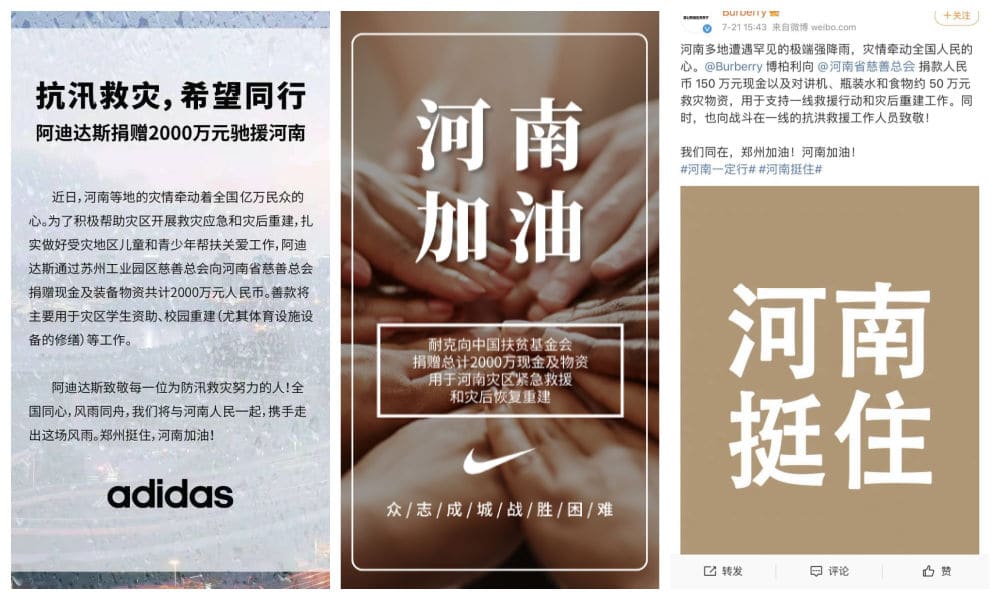
Adidas, Nike, and Burberry announcing their donations via social media.
Their contributions, however, did not seem to do much for their public image. The donations barely received media coverage, and some social media users who did know about them complained that Zara and H&M did not give enough money. There were also many netizens who praised Chinese sportswear brands for donating money and condemned Nike for giving “zero yuan,” even though the company had already announced donating 20 million yuan.
The company that really managed to win the public’s favor through their Henan donation is Erke (鸿星尔克 ), a relatively small and low-key Chinese sportswear company that seemingly was not doing too well over the past year facing great domestic competition.
When Erke donated 50 million yuan ($7.7 million) to the Henan flood relief efforts, it attracted major attention on Chinese social media. The sportswear brand donated an amount that was ten times higher than, for example, the donation made by major coffee company Starbucks.

Erke announcing its donation via social media (Weibo).
After people found out that the Erke brand donated such a high amount of money to help the people in Henan despite its own losses, its sales went through the roof – everyone wanted to support this generous ‘patriotic brand.’ While netizens rushed to the online shops selling Erke, the brand’s physical shops also ran out of products with so many people coming to buy their sportswear. Some sales assistants were moved to tears when the store suddenly filled up with customers.

People lining up at an Erke shop, photo via UDN.com.
The Erke hype even went so far that Chinese livestream sellers of Nike and Adidas notified their viewers that they actually supported the domestic Erke brand.
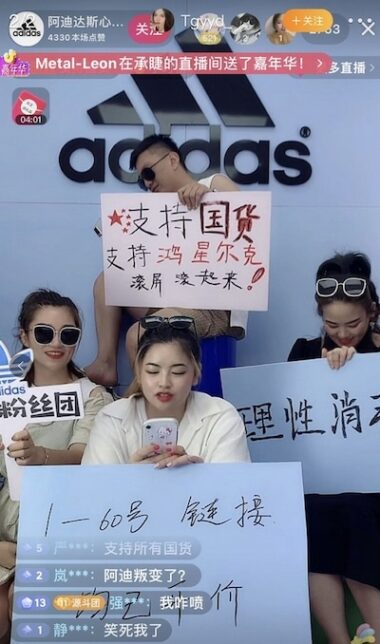
Adidas livestream sellers supporting Erke.
Erke profited from helping Henan, but there were also those companies that wanted to profit from the Henan floods without actually helping.
One ad by the local real estate company Kangqiao Real Estate promoting its ‘high lands’ properties led to online controversy. The Kangqiao Group poster highlighted the height advantage to its real estate locations, using the slogan: “Highland – live in the highland and only let the wind and rain be your scenery.”
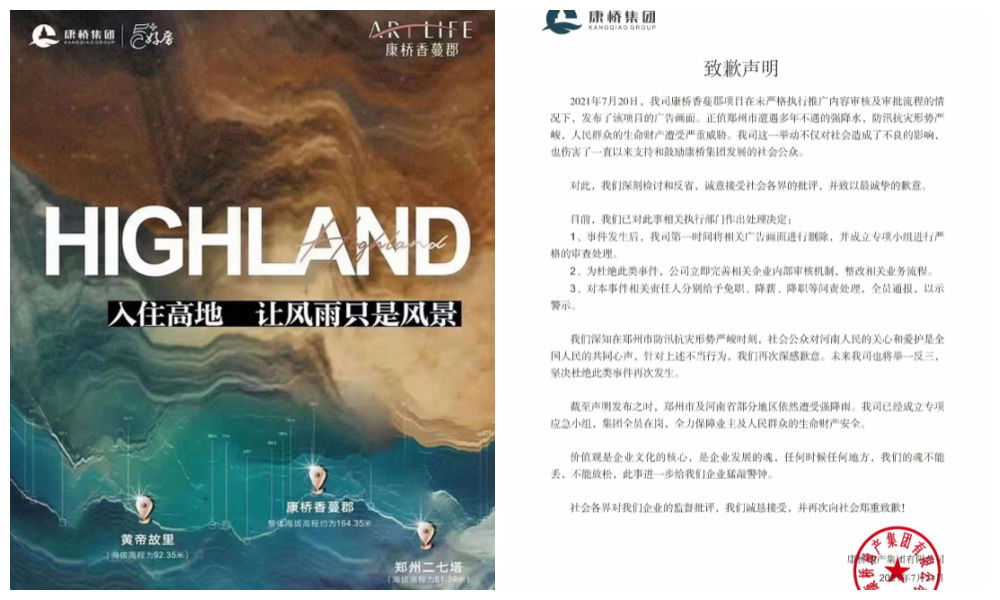
The company apologized for its insensitive marketing campaign on July 21st, the hashtag (#康桥地产致歉#) received over 130 million views, but the damage to its reputation had already been done. In a similar fashion, two other companies also promoted their “safe” real estate and parking lots during the Henan floodings, with one company using a photo of a flooded car in Henan to suggest what could happen when not using their services. It led to online outrage that these companies would use such a disastrous time for their own marketing purposes.
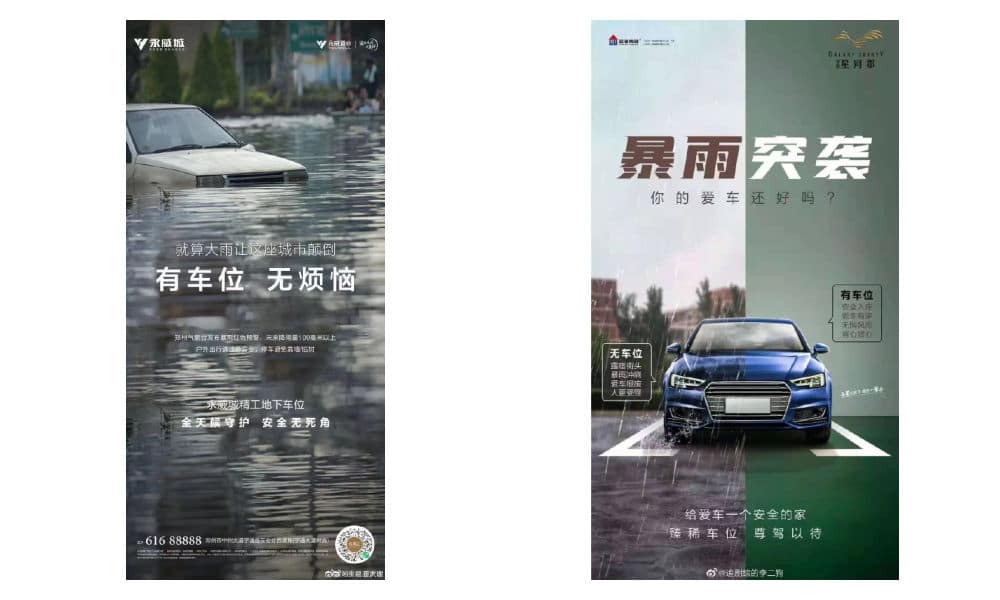
Other examples of people using the floods for their own publicity also went trending on social media, such as a group of Chinese online influencers who came to affected areas to record themselves, making a show out of the floods (photos below).



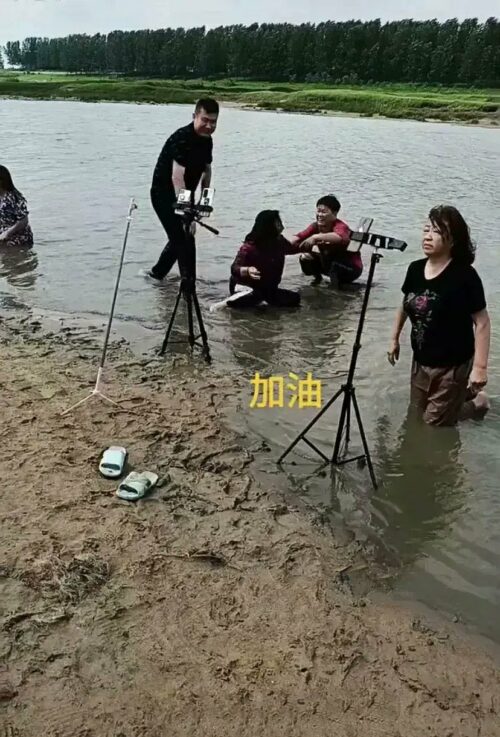
On July 27, some online influencers even went one step further to promote their channels and boost viewership. They traveled to Weihui, one of the province’s worst affected areas, and shamelessly stole a rescue boat, and headed into the waters without actually helping anyone. The incident prevented actual aid workers from doing their job and delayed the rescue work by four hours. It caused controversy on Weibo (#网红为拍视频偷救生艇谎称去救人#), with many wondering why these people would want to profit from a situation that was still so critical.
There were also online discussions on situations in which it was less clear to what extent people were in it for ‘the show.’ Chinese celebrities Han Hong (韩红) and Wang Yibo (王一博) both traveled to the affected areas for their charity work, but they were then accused of using the disaster for their own PR benefits. Many did not agree, saying they were “moved by their patriotism.”
Official Media Promoting National Solidarity
Most hashtags, videos, and trending topics on Weibo from the early moments of the rainfall and floods were initiated by regular netizens. Many people in the affected regions posted photos and videos of the local scenes themselves.
When the cars of the Zhengzhou subway line 5 were submerged in water due to flash floods on July 20, over 500 passengers were trapped. Footage of people in the carriages standing in chest-deep water that was still rising circulated on social media as rescue efforts were underway. Some hours later, rescuers managed to get people out safely, but 14 people did not make it out alive.
These kinds of unfolding events and tragedies were posted and reported on social media in real time by bloggers. Although official media channels and government accounts were also active in reporting incidents and releasing timely information, they soon focused on sending out a message of national unity and emphasized successful rescue operations and the competency of China’s relief efforts.
A similar approach to crisis communication on social media was seen during the outbreak of COVID19 and in other emergency situations – it is a route that has been taken for many years in the Party’s partnership with the media. In Media Politics in China (2017), author Maria Repnikova writes about the response to the Wenchuan earthquake (2008) when she points out how most official coverage concerning crisis management positively portrays the state’s rescue efforts and utilizes emotional projection of national unity and resilience, conveying an overall positive and people-centered narrative (118-121).
This patriotic discourse was also adopted in the social media coverage of the Henan floods by official channels. State media outlets were in unison in promoting hashtags such as “Stand Strong, Henan, We’re Coming” (#河南挺住我们来了#), “Zhengzhou, Hold On!” (#郑州挺住#), or “Shouldering Together with Henan” (#和河南一起扛#).
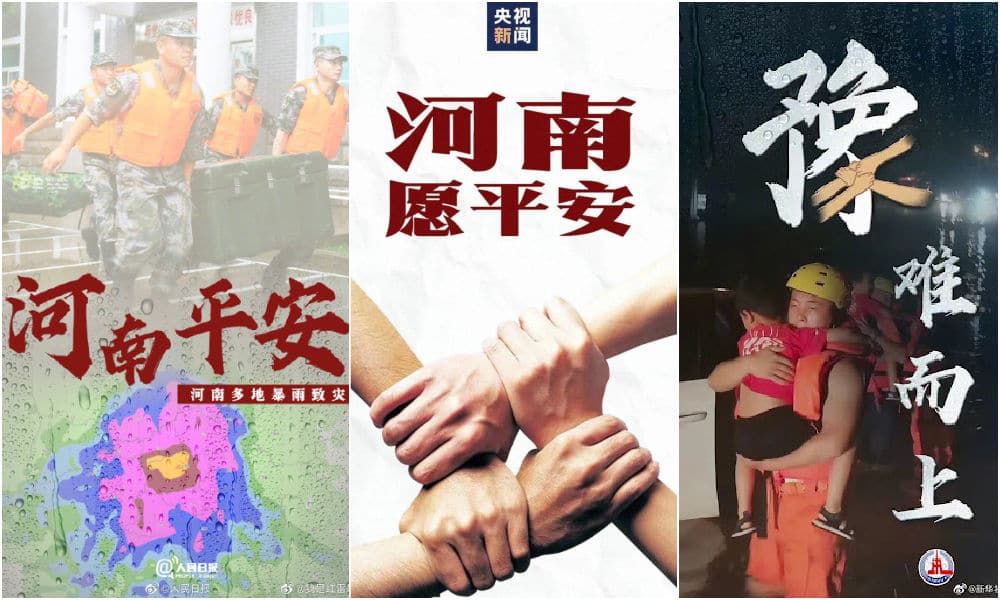
Online posters for the Henan Floods by CCTV, People’s Daily, and Xinhua.
In their news reporting, official media channels especially spotlighted people-centered stories. Some examples include the story of a 17-year-old boy who cried as he hugged the firefighter who rescued him, the news item on a 3-month old baby who was pulled from the ruins of a collapsed house in Xingyang, or the account of a Zhengzhou policeman who was so dedicated to his work that he hadn’t returned home in over 30 hours.
By July 21st, official Party newspaper People’s Daily had launched a hashtag titled “Touching Scenes of People Helping Each Other” (#河南暴雨中的感人互助画面#), which showed photos and videos of citizens working together in rescuing people from the water.
Another Weibo hashtag was titled “The Power of China during the Henan Rainstorms” (#河南暴雨中的中国力量#), which focused on the solidarity and compassion of the thousands of volunteers and rescue workers, stressing the idea that the people of China are able to get through difficulties together.
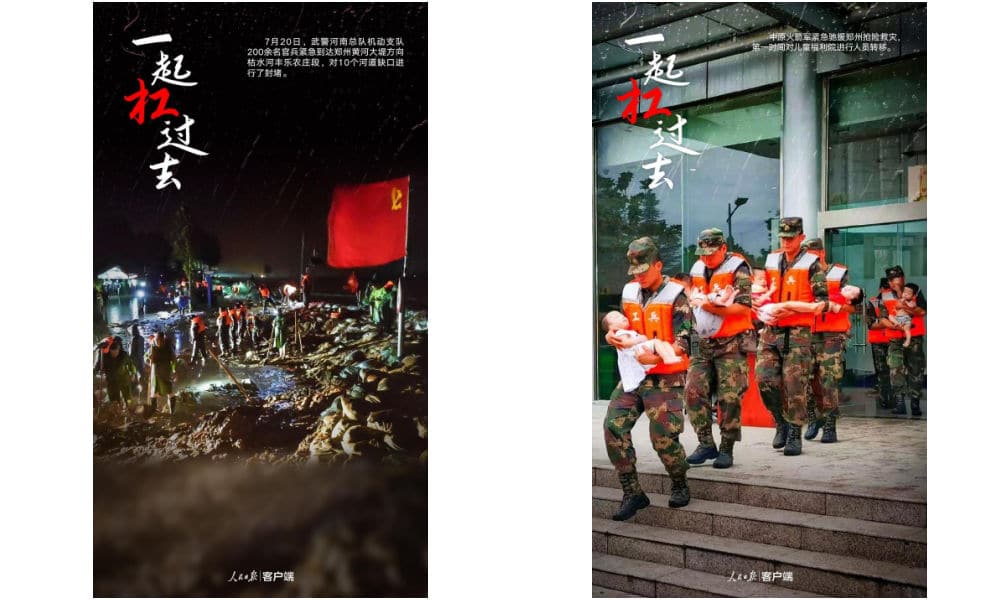
“We can get through this together,” online posters by People’s Daily.
The main message that is propagated by Chinese official media and government on social media is one that resonates with the general Weibo audience. Standing together with Henan and uniting in times of disaster is a sentiment that is strongly supported, not just by official channels, but by netizens, celebrities, and companies alike.
As the floods and relief efforts are still continuing in various parts of Henan Province, the messages of support and online assistance are ongoing. “Come on, Henan!” is the slogan that is sent out everywhere on Weibo, with people staying positive: “We can do this together. Everything is going to be alright.”
By Manya Koetse
Follow @whatsonweibo
References:
Levin, Dan. 2013. “Social Media in China Fuel Citizen Response to Quake.” New York Times, May 11 https://www.nytimes.com/2013/05/12/world/asia/quake-response.html [7.30.21].
Repnikova, Maria. 2017. Media Politics in China: Improvising Power under Authoritarianism. Cambridge: Cambridge University Press.
This text was written for Goethe-Institut China under a CC-BY-NC-ND-4.0-DE license (Creative Commons) as part of a monthly column in collaboration with What’s On Weibo.
Spotted a mistake or want to add something? Please let us know in comments below or email us. First-time commenters, please be patient – we will have to manually approve your comment before it appears.
Manya is the founder and editor-in-chief of What's on Weibo, offering independent analysis of social trends, online media, and digital culture in China for over a decade. Subscribe to gain access to content, including the Weibo Watch newsletter, which provides deeper insights into the China trends that matter. More about Manya at manyakoetse.com or follow on X.
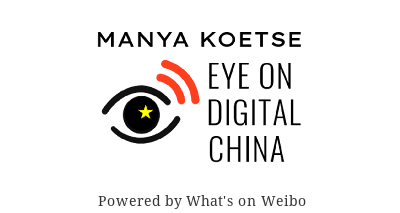
You may like
China Brands, Marketing & Consumers
Signals: Hasan Piker’s China Trip & the Unexpected Journey of a Chinese School Uniform to Angola
Hasan Piker’s controversial China tour, a Chinese school uniform resurfaces in Africa, a new winter hotspot, why Chinese elites ‘run’ to Tokyo, and more.
Published
7 days agoon
November 21, 2025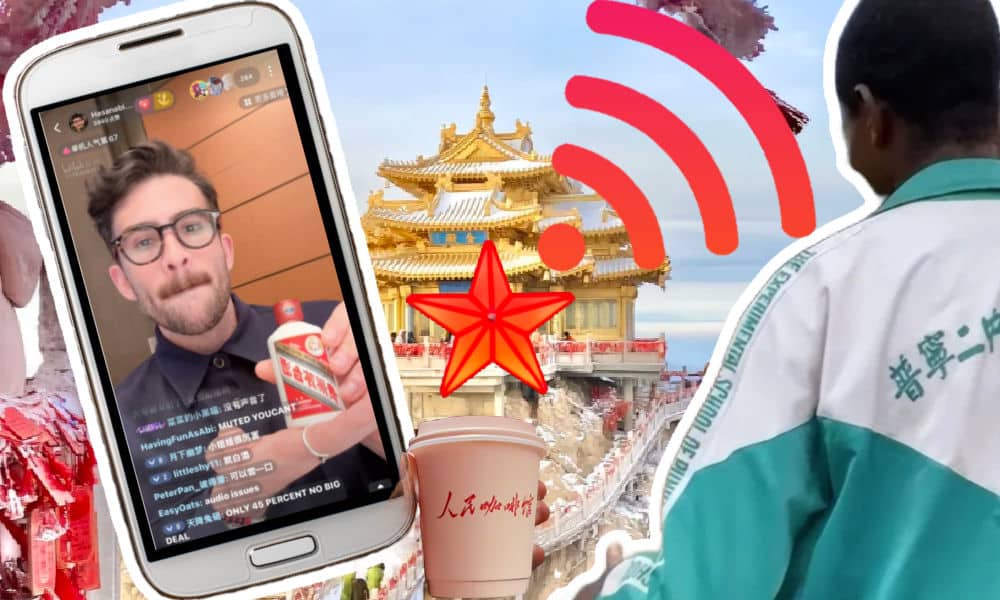
🌊 Signals — Week 47 (2025)
Part of Eye on Digital China, Signals highlights slower trends and online currents behind the daily scroll. This edition was sent to paid subscribers — subscribe to receive the next issue in your inbox.
Welcome to another edition of Eye on Digital China. Different from the China Trend Watch (check the latest one here if you missed it), this edition, part of the new Signals series, is about the slower side of China’s social media: the recurring themes and underlying shifts that signal broader trends beyond the quick daily headlines. Together with the deeper dives, the three combined aim to give you clear updates and a fuller overview of what’s happening in China’s online conversations & digital spaces.
For the coming two weeks, I’ll be traveling from Beijing to Chongqing and beyond (more on that soon) so please bear with me if my posting frequency dips a little. I’ll be sure to pick it up again soon and will do my best to keep you updated along the way. In the meantime, if you know of a must-try hotpot in Chongqing, please do let me know.
In this newsletter: Hasan Piker’s controversial China tour, a Chinese school uniform in Angola, a new winter hotspot, discussions on what happens to your Wechat after you die, why Chinese elites rùn to Tokyo, and more. Let’s dive in.
- 💰 The richest woman in China, according to the latest list by Hurun Research Institute, is the “queen of pharmaceuticals” Zhong Huijuan (钟慧娟) who has accumulated 141 billion yuan (over 19 billion USD). Women account for over 22% of Chinese billionaires (those with more than 5 billion RMB), underscoring China’s globally leading position in producing wealthy female entrepreneurs.
- 🧩 What happens to your WeChat after you die? A user who registered for NetEase Music with a newly reassigned phone number unexpectedly gained access to the late singer Coco Lee’s (李玟) account, as the number had originally belonged to her. The incident has reignited debate over how digital accounts should be handled after death, prompting platforms like NetEase and Tencent to reconsider policies on long-inactive accounts and take stronger measures to protect them.
- 📱 Although millions of viewers swoon over micro-dramas with fantasy storylines where rich, powerful men win over the “girl next door” through money and status, Chinese regulators are now stepping in to curb exaggerated plots featuring the so-called “dominant CEO” (霸道总裁) archetype, signaling stricter oversight for the booming short drama market.
- ☕ A popular Beijing coffee chain calling itself “People’s Cafe” (人民咖啡馆), with its style and logo evoking nationalist visual nostalgia, has changed its name after facing criticism for building its brand – including pricey coffee and merchandise – on Mao era and state-media political connotations. The cafe is now ‘Yachao People’s Cafe’ (要潮人民咖啡馆).
- 👀 Parents were recently shocked to see erotic ads appear on the Chinese nursery rhymes and children’s learning app BabyBus (宝宝巴士), which is meant for kids ages 0–8. BabyBus has since apologized, but the incident has sparked discussions about how to keep children safe from such content.
- 🧧The 2026 holiday schedule has continued to be a big topic of conversation as it includes a 9-day long Spring Festival break (from February 15 to February 23), making it the longest Lunar New Year holiday on record. The move not only gives people more time for family reunions, but also gives a huge boost to the domestic travel industry.
Hasan Piker’s Chinese Tour & The US–China Content Honeymoon
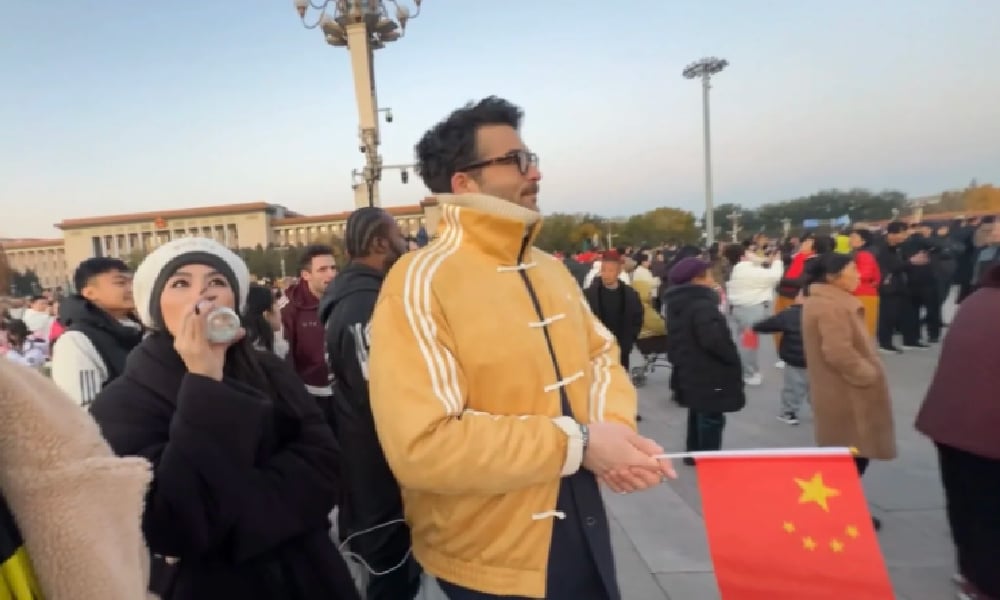
Livestreamer Hasan Piker during his visit to Tiananmen Square flag-rising ceremony.
It’s not time for the end-of-year overviews just yet – but I’ll already say that 2025 was the US–China ‘honeymoon’ year for content creation. It’s when China became “cool,” appealing, and eye-grabbing for young Western social media users, particularly Americans. The recent China trip of the prominent American online streamer Hasan Piker fits into that context.
This left-wing political commentator also known as ‘HasanAbi’ (3 million followers on Twitch, recently profiled by the New York Times) arrived in China for a two-week trip on November 11.

Piker screenshot from the interview with CGTN, published on CGTN.
His visit has been controversial on English-language social media, especially because Piker, known for his criticism of America (which he calls imperialist), has been overly praising China: calling himself “full Chinese,” waving the Chinese flag, joining state media outlet CGTN for an interview on China and the US, and gloating over a first-edition copy of Quotations from Chairman Mao (the Little Red Book). He portrays China as heavily misrepresented in the West and as a country the United States should learn from.

Hasan Piker did an interview with CGTN, posing with Li Jingjing 李菁菁.
During his livestreaming tour, Hasan, who is nicknamed “lemonbro” (柠檬哥) by Chinese netizens, also joined Chinese platforms Bilibili and Xiaohongshu.
But despite all the talk about Piker in the American online media sphere, online conversations, clicks, and views within China are underwhelming. As of now, he has around 24,000 followers on Bilibili, and he’s barely a topic of conversation on mainstream feeds.
Piker’s visit stands in stark contrast to that of American YouTuber IShowSpeed (Darren Watkins), who toured China in March. With lengthy livestreams from Beijing to Chongqing, his popularity exploded in China, where he came to be seen by many as a representative of cultural diplomacy.

IShowspeed in China, March 2025.
IShowSpeed’s success followed another peak moment in online US–China cultural exchange. In January 2025, waves of foreign TikTok users and popular creators migrated to the Chinese lifestyle app Xiaohongshu amid the looming TikTok ban.
Initially, the mass migration of American users to Xiaohongshu was a symbolic protest against Trump and US policies. In a playful act of political defiance, they downloaded Xiaohongshu to show they weren’t scared of government warnings about Chinese data collection. (For clarity: while TikTok is a made-in-China app, it is not accessible inside mainland China, where Douyin is the domestic version run by the same parent company).
The influx of foreigners — who were quickly nicknamed “TikTok refugees” — soon turned into a moment of cultural celebration. As American creators introduced themselves, Chinese users welcomed them warmly, eager to practice English and teach newcomers how to navigate the app. Discussions about language, culture, and societal differences flourished. Before long, “TikTok refugees” and “Xiaohongshu natives” were collaborating on homework assignments, swapping recipes, and bonding through humor. It was a rare moment of social media doing what we hope it can do: connect people, build bridges, and replace prejudice with curiosity.
Some of that same enthusiasm was also visible during IShowSpeed’s China tour. Despite the tour inevitably getting entangled with political and commercial interests, much of it was simply about an American boy swept up in the high energy of China’s vibrant cities and everything they offer.
Different from IShowSpeed, who is known for his meme-worthy online presence, Piker is primarily known for his radical political views. His China enthusiasm feels driven less by cultural curiosity and more by his critique of America.
Because of his stances — such as describing the US as a police state — it’s easy for Western critics to accuse him of hypocrisy in praising China, especially after a brief run-in with security police while livestreaming at Tiananmen Square.
Seen in broader context, Piker’s China trip reflects a shift in how China is used in American online discourse.
Before, it was Chinese ‘public intellectuals’ (公知) who praised the US as a ‘lighthouse country’ (灯塔国), a beacon of democracy, to indirectly critique China and promote a Western modernization model. Later, Chinese online influencers showcased their lives abroad to emphasize how much ‘brighter the moon’ was outside China.
In the post-Covid years, the current reversed: Western content creators, from TikTok influencers to political commentators, increasingly use China to make arguments that are fundamentally about America.
Between these cycles, authentic cultural curiosity gets pushed to the sidelines. The TikTok-refugee moment in early January may have been the closest we’ve come in years: a brief window where Chinese and American users met each other with curiosity, camaraderie, and creativity.
Hasan’s tour, in contrast, reflects a newer phase, one where China is increasingly used as a stage for Western political identity rather than a complex and diverse country to understand on its own terms. I think the honeymoon phase is over.
“Liu Sihan, Your School Uniform Ended Up in Angola”: China’s Second-Hand Clothing in Africa
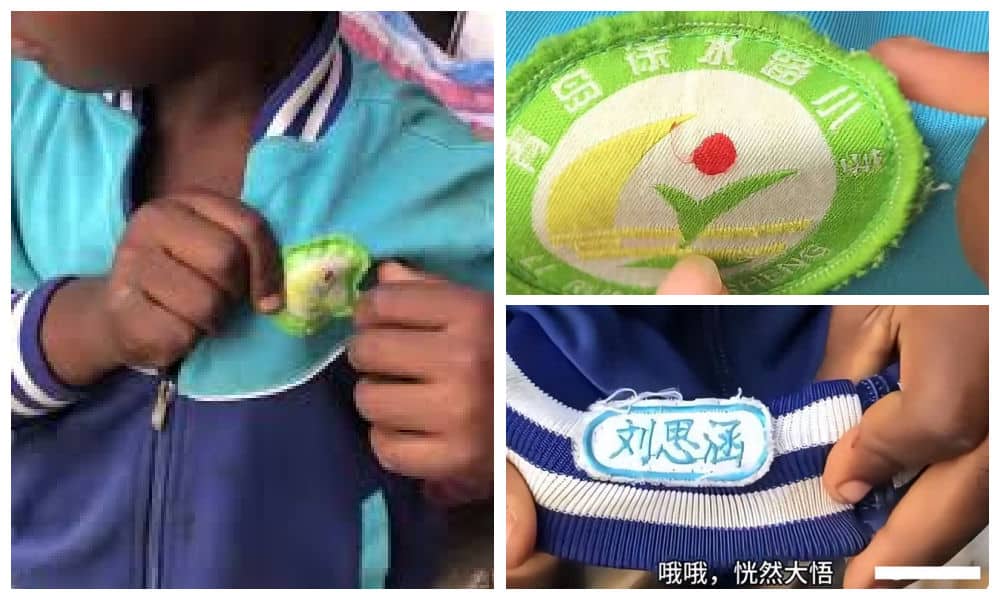
A Chinese school uniform went viral after a Chinese social media user spotted it in Angola.
“Liu Sihan, your schooluniform is hot in Africa” (刘思涵你的校服在非洲火了) is a sentence that unexpectedly trended after a Chinese blogger named Xiao Le (小乐) shared a video of a schoolkid in Angola wearing a Chinese second-hand uniform from Qingdao Xushuilu Primary School, that had the nametag Liu Sihan on it.
The topic sparked discussions about what actually happens to clothing after it’s donated, and many people were surprised to learn how widely Chinese discarded clothing circulates in parts of Africa.
Liu Sihan’s mother, whose daughter is now a 9th grader in Qingdao, had previously donated the uniform to a community clothing donation box (社区旧衣回收箱) after Liu outgrew it. She intended it to help someone in need, never imagining it to travel all the way to Africa.
In light of this story, one netizen shared a video showing a local African market selling all kinds of Chinese school items, including backpacks, and people wearing clothing once belonging to workers for Chinese delivery platforms. “In Africa, you can see school uniforms from all parts of China, and even Meituan and Eleme outfits,” one blogger wrote.
When it comes to second-hand clothing trade, we know much more about Europe–Africa and US–Africa flows than about Chinese exports, and it seems there haven’t been many studies on this specific topic yet. Still, alongside China’s rapid economic transformations, the rise of fast fashion, and the fact that China is the world’s largest producer and consumer of textiles, the country now has an enormous abundance of second-hand clothing.
According to a 2023 study by Wu et al. (link), China still has a long way to go in sustainable clothing disposal. Around 40% of Chinese consumers either keep unwanted clothes at home or throw them away.
But there may be a shift underway. Donation options are expanding quickly, from government bins to brand programs, and from second-hand stores to online platforms that offer at-home pickup.
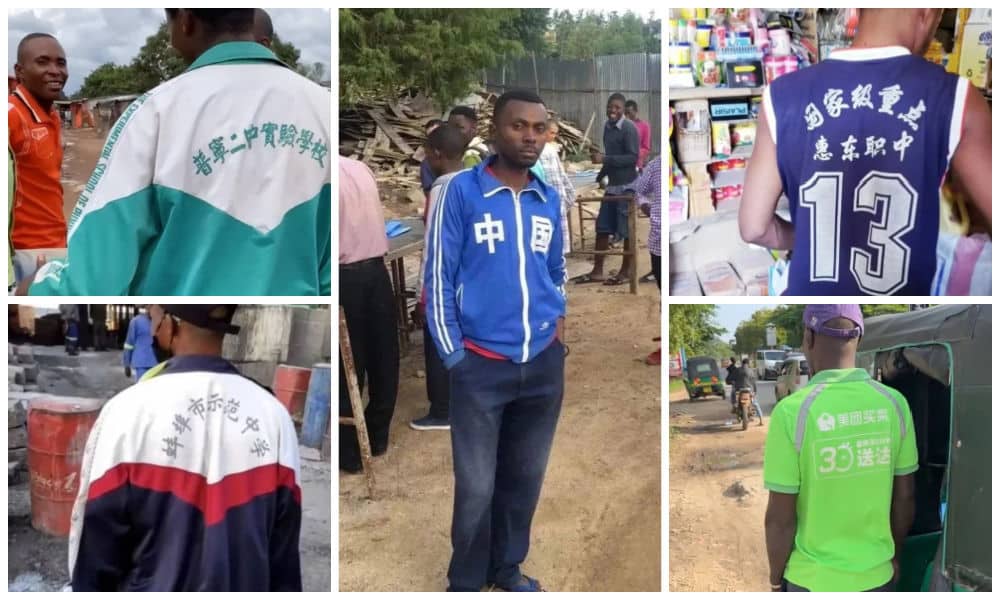
Chinese social media users posting images of school/work uniforms from China worn by Africans.
As awareness grows around the benefits of donating clothing (reducing waste, supporting sustainability, and the emotional satisfaction of giving), donation rates may rise significantly. The story of Liu Sihan’s uniform, which many found amusing, might even encourage more people to donate. And if that happens, scenes of African children (and adults) wearing Chinese-donated clothes may become much more common than they now are.
Laojunshan: New Hotspot in Cold Winter

Images from Xiaohongshu, 背包里的星子, 旅行定制师小漾
Go to Zibo for BBQ, go to Tianshui for malatang, go to Harbin for the Ice Festival, cycle to Kaifeng for soup dumplings, or head to Dunhuang to ride a camel — over recent years, a number of Chinese domestic destinations have turned into viral hotspots, boosted by online marketing initiatives and Xiaohongshu influencers.
This year, Laojunshan is among the places climbing the trending lists as a must-visit spot for its spectacular snow-covered landscapes that remind many of classical Chinese paintings. Laojunshan (老君山), a scenic mountain in Henan Province, is attracting more domestic tourists for winter excursions.
Xiaohongshu is filled with travel tips: how to get there from Luoyang station (by bus), and the best times of day to catch the snow in perfect light (7–9 AM or around 6–6:30 PM).
With Laojunshan, we see a familiar pattern: local tourism bureaus, state media, and influencers collectively driving new waves of visitors to the area, bringing crucial revenue to local industries during what would otherwise be slower winter months.
WeChat New Features & Hong Kong Police on Douyin
🟦 WeChat has been gradually rolling out a new feature that allows users to recall a batch of messages all at once, which saves you the frantic effort of deleting each message individually after realizing you sent them to the wrong group (or just regret a late-night rant). Many users are welcoming the update, along with another feature that lets you delete a contact without wiping the entire chat history. This is useful for anyone who wants to preserve evidence of what happened before cutting ties.
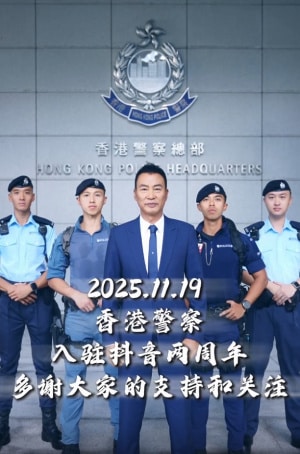
🟦The Hong Kong Police Force recently celebrated its two-year anniversary on Douyin (the Chinese version of TikTok), having accumulated nearly 5 million followers during that time. To mark the occasion, they invited actor Simon Yam to record a commemorative video for their channel (@香港警察). The presence of the Hong Kong Police on the Chinese app — and the approachable, meme-friendly way they’ve chosen to engage with younger mainland audiences — is yet another signal of Hong Kong institutions’ strategic alignment with mainland China’s digital infrastructure, a shift that has been gradually taking place. The anniversary video proved popular on Douyin, attracting thousands of likes and comments.
Why Chinese Elite Rùn to Japan (by ChinaTalk)
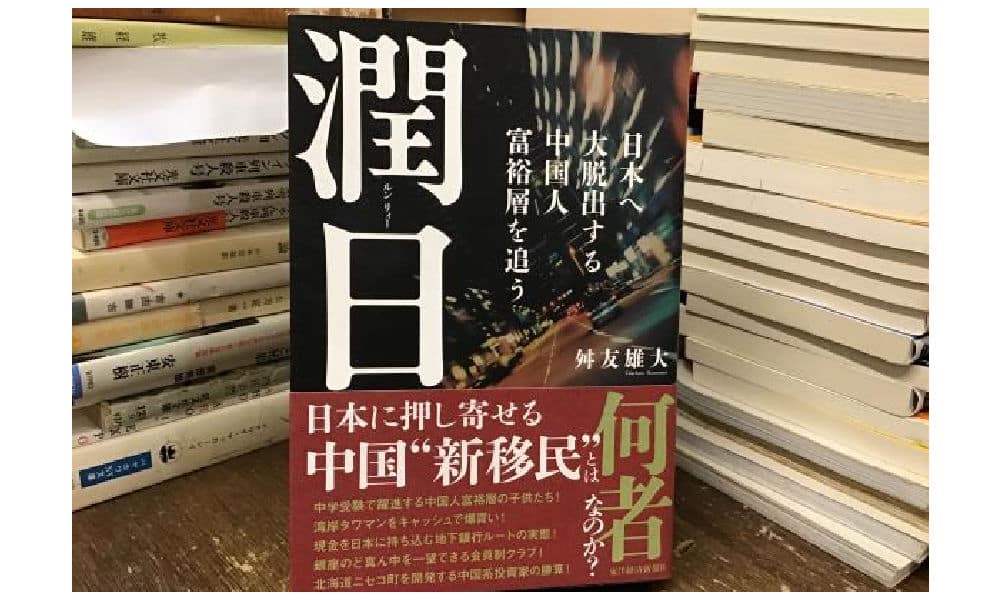
Over the past week, Japan has been trending every single day on Chinese social media in light of escalating bilateral tensions after Japanese PM Takaichi made remarks about Taiwan that China views as a direct military threat. The diplomatic freeze is triggering all kinds of trends, from rising anti-Japanese sentiment online and a ban on Japanese seafood imports to Chinese authorities warning citizens not to travel to Japan.
You’d think Chinese people would want to be anywhere but Japan right now — but the reality is far more nuanced.
In a recent feature in ChinaTalk, Jordan Schneider interviewed Japanese journalist & researcher Takehiro Masutomo (舛友雄大) who has just published a book about Japan’s new Chinese diaspora, explaining what draws Chinese dissidents, intellectuals, billionaires, and middle-class families to Tokyo.
The book is titled Run Ri: 潤日 Following the Footsteps of Elite Chinese Escaping to Japan (only available in Japanese and Traditional Chinese for now). (The word Rùn 润/潤, by the way, is Chinese online slang and meme expresses the desire to escape the country.)
A very interesting read on how Chinese communities are settling in Japan, a place they see as freer than Hong Kong and safer than the U.S., and one they’re surprisingly optimistic about — even more so than the Japanese themselves.
Thanks for reading this Eye on Digital China Signals. For fast-moving trends and deeper dives, keep an eye on the upcoming newsletters.
And if you just so happen to be reading this without a subscription and appreciate my work, consider joining to receive future issues straight in your inbox.
A small housekeeping note:
This Eye on Digital China newsletter is co-published for subscribers on both Substack and the main site. If you’re registered on both platforms, you’ll receive duplicate emails — so if that bothers you, please pick your preferred platform and unsubscribe from the other.
Many thanks to Miranda Barnes for helping curate some of the topics in this edition.
— Manya
Spotted an error or want to add something? Comment below or email me.
First-time commenters require manual approval.
©2025 Eye on Digital China / What’s on Weibo. Do not reproduce without permission —
contact info@whatsonweibo.com.
China Brands, Marketing & Consumers
House of Wahaha: Zong Fuli Resigns
In the year following her father’s death, Zong Fuli dealt with controversy after controversy as the head of Chinese food & beverage giant Wahaha.
Published
1 month agoon
October 14, 2025
It’s a bit like a Succession-style corporate drama 🍿.
Over the past few years, we’ve covered stories surrounding Chinese beverage giant Wahaha (娃哈哈) several times — and with good reason.
Since the passing of its much-beloved founder Zong Qinghou (宗庆后) in March 2024, the company has been caught in waves of internal turmoil.
Some context: Wahaha is regarded as a patriotic brand in China — not only because it’s the country’s equivalent of Coca-Cola or PepsiCo (they even launched their own cola in 1998 called “Future Cola” 非常可乐, with the slogan “The future will be better” 未来会更好), but also because its iconic drinks are tied to the childhood memories of millions.
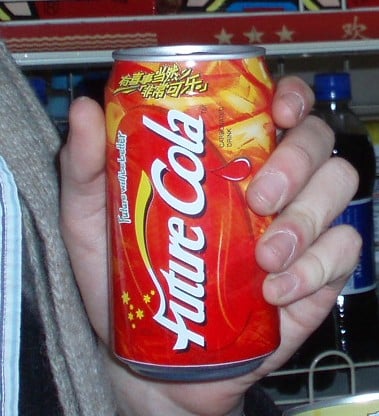
Future Cola by Wahaha via Wikipedia.
There’s also the famous 2006 story when Zong Qinghou refused a buyout offer from Danone. Although the details of that deal are complex, the rejection was widely seen as Zong’s defense of a Chinese brand against foreign takeover, contributing to his status as a national business hero.
After the death of Zong, his daughter Zong Fuli, also known as Kelly Zong (宗馥莉), took over.
🔹 But Zong Fuli soon faced controversy after controversy, including revelations that Wahaha had outsourced production of some bottled water lines to cheaper contractors (link).
🔹 There was also a high-profile family inheritance dispute involving three illegitimate children of Zong Qinghou, now living in the US, who sued Zong Fuli in Hong Kong courts, claiming they were each entitled to multi-million-dollar trust funds and assets.
🔹 More legal trouble arrived when regulators and other shareholders objected to Zong Fuli using the “Wahaha” mark through subsidiaries and for new products outside officially approved channels (the company has 46% state ownership).
⚡️ The trending news of the moment is that Zong Fuli has officially resigned from all positions at Wahaha Group as chairman, legal representative, and director. She reportedly resigned on September 12, after which she started her own brand named “Wa Xiao Zong” (娃小宗). One related hashtag received over 320 million views on Weibo (#宗馥莉已经辞职#). Wahaha’s board confirmed the move on October 10, appointing Xu Simin (许思敏) as the new General Manager. Zong remains Wahaha’s second-largest shareholder.
🔹 To complicate matters further, Zong’s uncle, Zong Wei (宗伟), has now launched a rival brand — Hu Xiao Wa (沪小娃) — with product lines and distribution networks nearly identical to Wahaha’s.
As explained by Weibo blogger Tusiji (兔撕鸡大老爷), under Zong Qinghou, Wahaha relied on a family-run “feudal” system with various family-controlled factories. Zong Fuli allegedly tried to dismantle this system to centralize power, fracturing the Wahaha brand and angering both relatives and state investors.
Others also claim that Zong had already been engaged in a major “De-Wahaha-ization” (去娃哈哈化) campaign long before her resignation.
In August of this year, Zong gave an exclusive interview to Caijing (财经) magazine where she addressed leadership challenges and public controversies. In the interview, Zong spoke more about her views on running Wahaha, advocating long-term strategic growth over short-term results, and sharing her determination to not let controversy distract her from business operations. That plan seems to have failed.
While Chinese netizens are watching this family brand war unfold, many are rooting for Zong after everything she has gone through – they feel her father left her in a complicated mess after his death.
At the same time, others believe she tried to run Wahaha in a modern “Western” way and blame her for that.
For the brand image of Wahaha, the whole ordeal is a huge blow. Many people are now vowing not to buy the brand again.
As for Zong’s new brand, we’ll have to wait for the next episode in this family company drama to see how it unfolds.
By Manya Koetse
(follow on X, LinkedIn, or Instagram)
Spotted a mistake or want to add something? Please let us know in comments below or email us. First-time commenters, please be patient – we will have to manually approve your comment before it appears.
©2025 Whatsonweibo. All rights reserved. Do not reproduce our content without permission – you can contact us at info@whatsonweibo.com.
Subscribe
Eye on Digital China is a reader-supported publication by
Manya Koetse (@manyapan) and powered by What’s on Weibo.
It offers independent analysis of China’s online culture, media, and social trends.
To receive the newsletter and support this work, consider
becoming a paid subscriber.

Get in touch
Have a tip, story lead, or book recommendation? Interested in contributing? For ideas, suggestions, or just a quick hello, reach out here.

Signals: Hasan Piker’s China Trip & the Unexpected Journey of a Chinese School Uniform to Angola

About Eye on Digital China — Powered by What’s on Weibo

China Trend Watch: Japan Tensions, Nexperia Fallout, Yunnan’s ‘Wild Child,’ & “Modern Opium”

Eye on Digital China: How Chinese Social Media Evolved from the Blog Era to the AI-driven Age

Trump and Takaichi: The Unexpected Love Affair

The Wong Kar-wai Scandal Explained: The Dark Side of ‘Blossoms Shanghai’

From Schadenfreude to Sympathy: Chinese Online Reactions to Charlie Kirk Shooting

From Nobel Farewell to ‘VIP Toilets’: What’s Trending in China

From Tents to ‘Tangping Travel”: New Travel Trends among Young Chinese

China’s “Post Parade Afterglow”: 6 Social Media Trends
Popular Reads
-

 China Memes & Viral4 months ago
China Memes & Viral4 months agoHidden Cameras and Taboo Topics: The Many Layers of the “Nanjing Sister Hong” Scandal
-

 China Insight7 months ago
China Insight7 months agoUnderstanding the Dr. Xiao Medical Scandal
-

 China Memes & Viral11 months ago
China Memes & Viral11 months agoOur Picks: Top 10 Chinese Buzzwords and Phrases of 2024 Explained
-

 China Digital10 months ago
China Digital10 months ago“Dear Li Hua”: The TikTok/Xiaohongshu Honeymoon Explained



